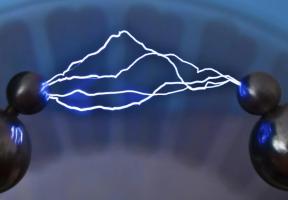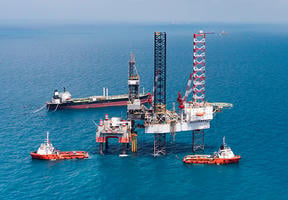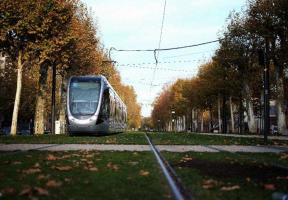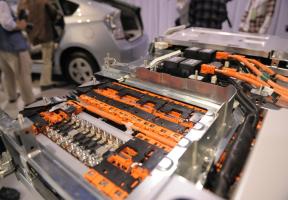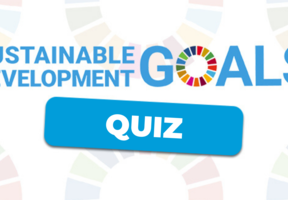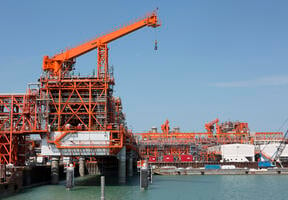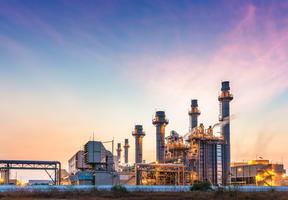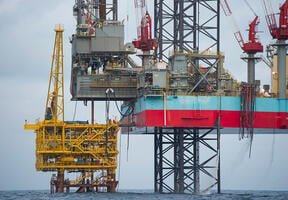France and Energy in 13 Pictures
5 min read
Explore energy facilities in France, with pictures illustrating hydro, wind, solar and nuclear , as well as and energy. A complete educational photo gallery on energy in France.

1. The Energy Centers in France
Over the years, the different energy sources have shaped the French landscape. The slag heaps extracted from the mines are characteristic features in the North, while dams have changed the mountain lakes. Nuclear power plants are easily recognizable with their imposing cooling towers. Today, solar panels and wind turbines are increasingly common, both and . In the picture, a photovoltaic farm has been installed near the Tricastin nuclear power plant in the Rhône valley, illustrating the new in France.

2. The Long History of Energy Transitions
Coal, oil and gas, hydro, nuclear, solar, - energy transitions have always marked industrial history. Coal leveraged the first industrial revolution, and began to decline in France in the 1960s, when it was replaced by oil and gas. The last French mine closed in 2004. Coal mine production triggered over a century of economic wealth and working-class culture, leaving lasting landmarks in its wake, with the slag heaps formed by the piles of waste material removed during mining. They still dominate the landscape in France, such has here, in Lens (Northern France).

3. The Development of Hydroelectricity
In the 1950s, France developed a vast hydroelectricity program, involving the construction of dams in the mountains and on the courses of major rivers. Energy transitions are never plain sailing. In Tignes, in the French Alps, the former village was “submerged” in spring 1952 to enable the formation of a lake and the construction of a dam standing over 180 m high - still the highest in France today. The picture shows the dam reservoir and the new village that was built-up above the dam. Hydro energy is still the leading source in France.

4. The Rise of Nuclear Energy
In the 1970s, in the face of the first oil crisis, France embarked on a large scale civil nuclear program, which still today sets it among the leading countries in global nuclear power production. Though active for decades, the French anti-nuclear movements did not manage to prevent the development, unlike their German counterparts. New power plants are in the pipeline, and in April 2024 the Flammanville 3 EPR, in Normandy, was launched. The picture shows the nuclear being loaded into the tank.

5. The Rise of Offshore Wind
The four pillars of the French energy transition are , renewable energies, energy efficiency and energy sufficiency. Among renewable energies, in 2024, wind energy took off again, with the development of offshore wind, a sector in which France was staying behind its European partners (the United Kingdom, Germany, Denmark, etc.). In the picture, the kite surf carrying the surfer, symbolizes the wind strength. On the horizon, you can see a few of the 80 wind turbines of the first farm opened in 2023 offshore Saint Nazaire on the Atlantic coast. A facility that often causes concern among the local population, and those working in the fishing and tourism industries.

6. The Vast Solar Farms
France is not the most advanced country when it comes to the use of solar energy, for either electricity or heating. It lies far behind Germany and Italy, and even trails behind Spain and the United Kingdom, but has begun to install giant solar farms. The one located in Cestas, south of Bordeaux, is one of the biggest in Europe. Almost a million solar panels cover the 260 hectares of the power plant. Every year, it generates the equivalent of the energy needs of Bordeaux. The government’s aim is to double French solar power by 2050.

7. Agrivoltaics, or Solar Energy in the Countryside
In addition to the extensive farms on the ground, solar panels are becoming increasingly common on the roofs of houses, car parks, supermarkets, factories and more and more in the agricultural world. This is called . Solar panels can cover storage buildings and barns, greenhouses, orchards and small farms. The picture shows the aviary of a pheasant farm in the Lot-et-Garonne region (Southwest France), used as a solar panel support.

8. The Potential of Geothermal Energy
Extracting steam at 200°C at a depth of 5 km to run a turbine and produce electricity: since 2016, the challenge of deep geothermal energy was overcome in Soultz-sous-Forêts, in the foothills of the Vosges. Geothermal energy can also provide heating for homes and industry. On a national level, the governmental ambition is to step up the pace of deep geothermal project deployment fourfold by 2035.

9. Production of Biogas
France has an extensive farming culture and is gradually developing biogas, produced by the decomposition of organic matter (farm waste, liquid manure, sewage sludge). It comprises mainly methane, and is used to produce heat, electricity or agro-fuels. The picture shows a unit on a farm in Chauymes-en-Brie, 60 km from Paris. Part of the gas is used on site, the rest is reinjected into the network.

10. The Development of Heat Networks
France introduced a “heat plan” to improve the district heating systems in cities like Paris. They use local wood or waste to produce heat, which reduces the need to transport fuel over long distances. The water heated using this energy then circulates in the subsurface pipelines to heat buildings. The picture shows a stock of wood that will be used to fuel a boiler.

11. The Development of Refining
In France and in Europe, the oil refining industry is experiencing difficulties owing to global competition and the decrease in use. There is a tendency to combine refining and petrochemical operations on the same site to improve efficiency. The TotalEnergies platform in Normandy for example converts almost 12 million tons of per year into 200 different products. Some refineries, like La Mède near Marseille, are turning toward the production of using .

12. Cities and Homes on the Quest for Innovation
French cities have embarked on initiatives to become more ecological and sustainable. They include the construction of energy-saving buildings, cycle paths, planting green areas and the use of technologies to improve the flow of traffic. Heat insulation of buildings is a priority. The picture shows a building in Montreuil near Paris, that has been totally renovated to improve its insulation.
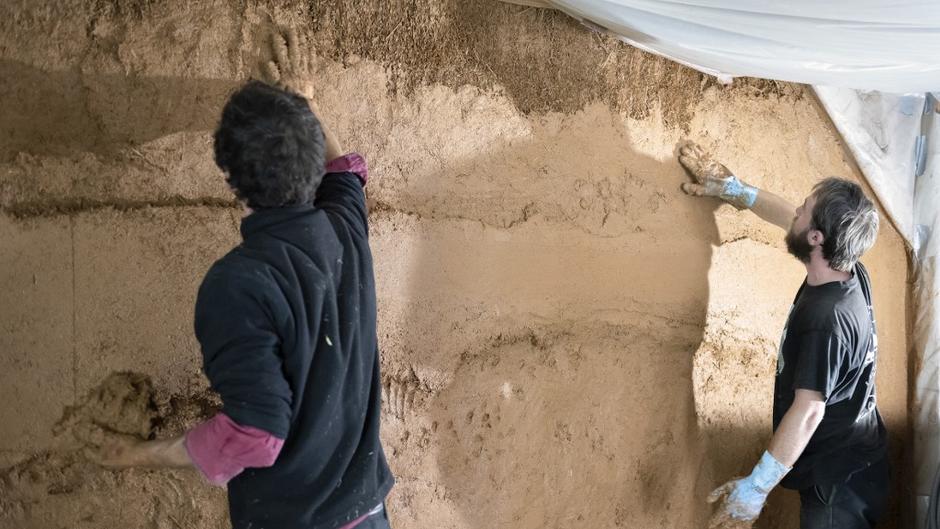
13. Personal Commitment, the Key to Success
In addition to efforts from the government and companies, the general population also contributes to the transition towards cleaner energies. By consuming less and paying attention to the innovations available, they can make a significant contribution. There are new technologies for houses that use natural, local and recyclable materials. The picture shows a worker building a wall using straw and cob, incorporated into a wooden framework.
 Our most popular content
Our most popular content
See all
